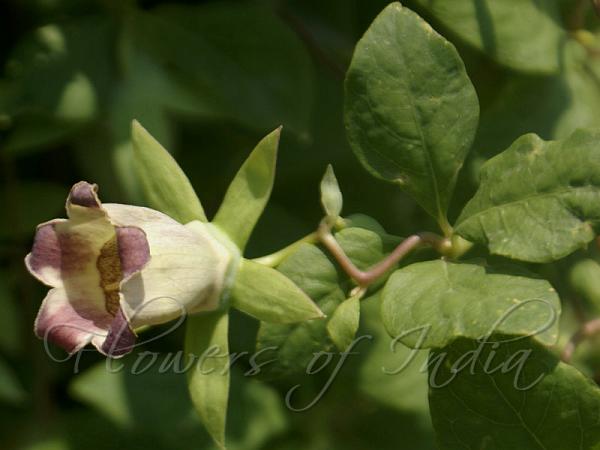|
| Bonnet Bellflower |
|

|

| File size | 80782 |
| Original date | 8/6/11 12:45 PM |
| Resolution | 800 x 600 |
| Flash | Flash did not fire, auto |
| Focal length | 50.0mm |
| Exposure time | 1/320s |
| Aperture | 5.6 |
| Focus Distance | |
| Metering Mode | Multi-segment |
| Camera make | SONY |
| Camera model | DSLR-A100 |
| Sensor type |
|
|
|
|
Photo: |
Botanical name: Codonopsis lanceolata Family: Campanulaceae (Bell flower family)
Synonyms: Codonopsis bodinieri, Campanumoea lanceolata, Codonopsis yesoensis
Synonyms: Codonopsis bodinieri, Campanumoea lanceolata, Codonopsis yesoensis
Bonnet Bellflower is a hairless vine or
occasionally sparsely hairy on stems and leaves. Roots are usually
fusiform-thickened, 10-20 × 1-6 cm. Stems are twining, yellow-green
but with purplish shade, more than 100 cm, often branched. Leaves on
main stems are alternate, lanceshaped, ovate, or elliptic, 8-14 × 3-7
mm. Usually leaves are 2-4-fascicled on top of branchlets, subopposite
or verticillate. Leaf-stalk is 1-5 mm, leaves gray-green below, green
above, ovate, narrowly ovate, or elliptic, 3-12 × 1.3-5.5 cm,
abaxially rarely hirsute, veins obvious, base flat or sometimes
rounded, margin usually entire or sparsely wavy, tip pointed or blunt.
Flowers arise singly or paired on top of branchlets. Flower-stalks are
1-9 cm. Sepal cup is adnate to ovary by half, tube hemispherical,
sepals ovate or triangular, 1-3 × 0.5-1 cm, entire, pointed, sinus
between sepals pointed or gradually becoming broader after anthesis.
Flowers are broadly bell-shaped, 2-4 × 2-3.5 cm, shallowly lobed.
Lobes are yellow-green or milk-white, with purple spots, deltoid, 0.5-1
cm, revolute. Filaments are subulate, slightly dilated at base, 4-6 mm;
anthers 3-5 mm; ovary inferior. Capsule is hemispherical at base,
rostrate toward apex, 1.6-3.5 cm in diam. Seeds numerous, brown,
winged, seed body oblong or ellipsoid. Bonnet Bellflower is native of
China and Japan, often grown as ornamental, used in medicine and
flavoring. Flowering: July-August.
Identification credit: Gurcharan Singh
| Photographed in Herbal Garden below Chashmeshahi, Kashmir. |